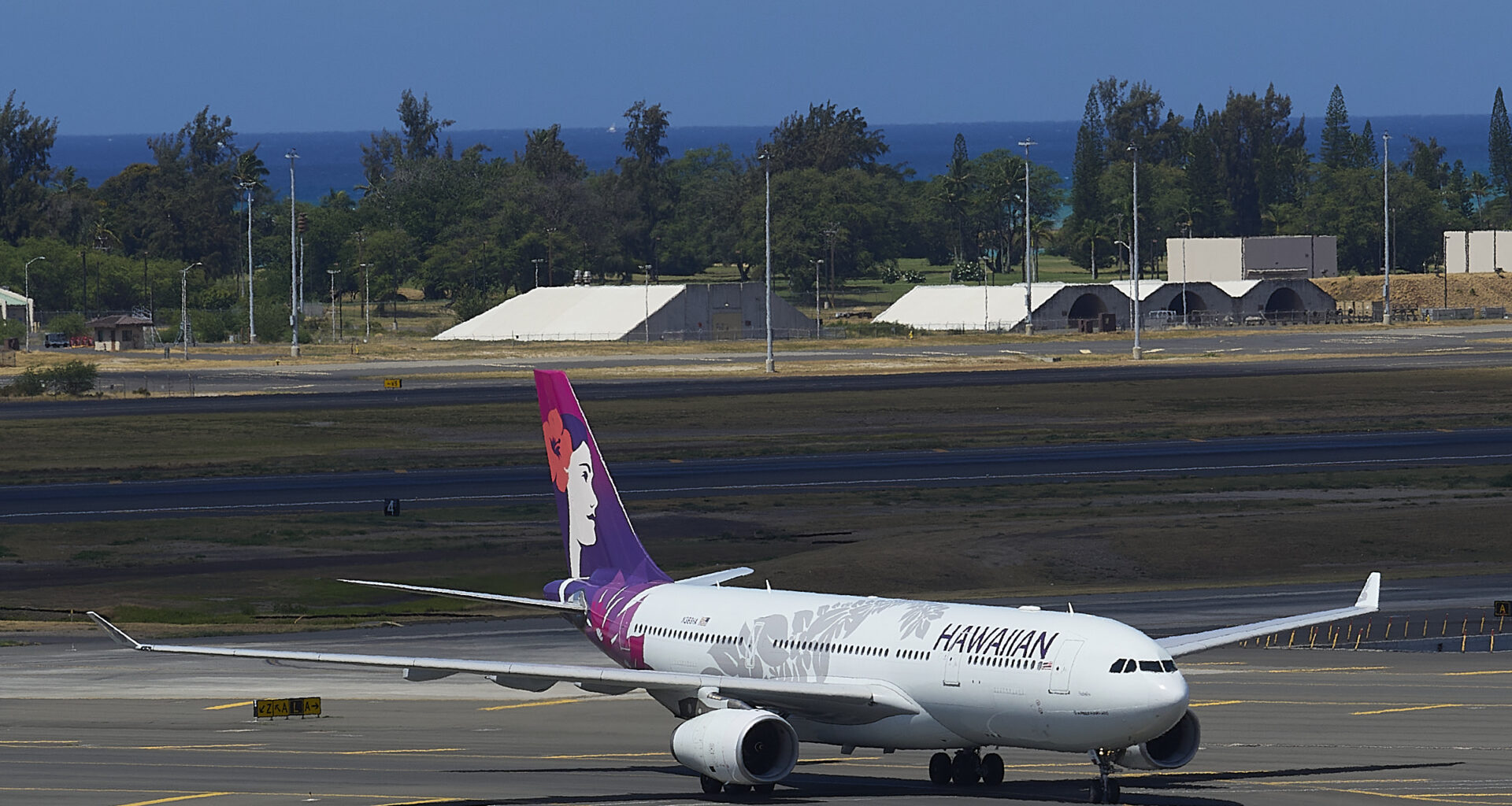The Hawaiʻi Department of Transportation has made plant-based jet fuel a centerpiece of its final plan to reduce carbon emissions under an agreement with a group of Hawaiʻi teens who had sued the state over climate change.
The teens had objected to a draft plan to use the fuel – the airplane equivalent of biodiesel – as a tool for implementing the settlement, which requires the state to eliminate all carbon emissions related to transportation in Hawaiʻi by 2045.
The settlement involves all forms of transportation, but aviation is the biggest problem. Interisland air travel produces more than 50% of Hawaiʻi’s transportation emissions, and there is no existing technology to cut that to zero.
 Hawaiian Airlines has made an equity investment in REGENT Craft Inc., developer of what it calls its all-electric Seaglider, a 12-passenger plane expected to enter service between 2026 and 2027. Aviation officials say such small planes are not equipped to handle thousands of interisland travelers a day. (Courtesy: REGENT Craft)
Hawaiian Airlines has made an equity investment in REGENT Craft Inc., developer of what it calls its all-electric Seaglider, a 12-passenger plane expected to enter service between 2026 and 2027. Aviation officials say such small planes are not equipped to handle thousands of interisland travelers a day. (Courtesy: REGENT Craft)
The state’s plan follows litigation that started in 2022 when a dozen teenagers represented by Earthjustice and Our Children’s Trust sued the state, citing their right to a clean and healthful environment.
The suit also called for the department to do a better job working to meet the 2045 deadline, which was previously adopted by the Legislature and mandated by statute.
Gov. Josh Green settled with the teens to fanfare in June 2024.
The settlement called for the Department of Transportation to create a plan to meet the 2045 deadline. In a draft plan issued in June, the department identified the bio-jet fuel as the best solution for reducing aviation emissions. The teen plaintiffs objected, saying the bio-jet fuel wasn’t 100% carbon-free and carried other negative environmental impacts. Instead, they said the state should focus on electric airplanes.
But the aviation industry says electric airplane technology is limited and that the best tool is bio-jet fuel, known in industry parlance as sustainable aviation fuel, or SAF. The industry says SAF produces 50% to 80% less carbon than regular jet fuel.
Last week, the Department of Transportation issued a final plan citing the use of SAF as its main strategy for aviation. The plan — which is part of an ongoing deliberative process that a panel of young residents will be able to participate in — cites a collaboration of the U.S. departments of transportation, energy and agriculture to produce enough SAF by 2050 to replace all traditional jet fuel used in the U.S. The department also said it will support a tax credit for SAF production in Hawaiʻi.
While the department’s final plan calls for numerous airport and air ground service changes to reduce emissions, such as buying more electric service vehicles and buses, the plan tacitly rejects the teens’ push for electric planes. The plan for electric and hydrogen-powered aircraft is limited to a “high-level market study.”
Ultimately, the study says, the goal of “zero emissions” from transportation by 2045 may be unattainable. It points to aviation, large cargo vessels and trucks as the biggest challenges.
While the plan says the department’s goal is to achieve “absolute zero emissions” as soon as possible, it also says, “There are some sectors of the transportation system that will be harder to decarbonize than others, and thus there is a need for interim solutions that are designed to reduce emissions while zero-emission solutions continue to be innovated and developed.”
Civil Beat’s coverage of climate change and the environment is supported by The Healy Foundation, the Marisla Fund of the Hawai‘i Community Foundation and the Frost Family Foundation.

Sign up for our FREE morning newsletter and face each day more informed.
Sign Up
Sorry. That’s an invalid e-mail.
Thanks! We’ll send you a confirmation e-mail shortly.
